Rising work stress and burnout
Headspace for Work 2021 Mental Health Trends Report:
5 Trends shaping the state of employee mental health

Intro
Healthier, happier employees are those who feel their well-being is supported by compassionate leadership and organizations, especially given the challenges we’ve all faced over the past difficult year.
In 2020, companies stepped up mental health benefits and programs to meet the moment. But in 2021, they seem to be scaling back, even though people are still experiencing high levels of stress in the aftermath of the pandemic, not to mention dealing with the adjustment to a new normal.
This report serves as a forward-thinking guide to what your teams need if they are to show up feeling and performing their best, even beyond current stressors.
At the height of the pandemic in 2020, our team of experts at Headspace for Work surveyed thousands of employees in the US and UK to get a sense of their mental well-being, and to understand what employers were doing to care for their people. The results, published in our comprehensive report "A Path Through the Storm," revealed that many employers made an effort to support mental health in the workplace, but were unprepared, or ill-equipped, to do so.
This year, we doubled the number of employees surveyed to 5,085 adults between the ages of 18 and 64, and expanded the study to include 3 new countries: Australia, France, and Germany. What we found suggests that while some pressures have eased, the storm is not over — and new challenges are emerging in the evolving state of the workplace.
One thing is clear: employees continue to seek help from employers in addressing mental health issues. So, in this report, we will unpack the data and highlight trends that are important to employers, and provide insights from our team of behavioral scientists on how we can better support the mental health of employees and their dependents.
Trend 1
Employers are retreating when employees need them most

A growing gap between mental health needs and corresponding support
Overall stress is slightly lower in 2021, but work stress and work-life balance struggles are becoming more prominent. Last year, employers stepped up to provide much-needed mental health support for their people in the midst of multiple crises. But while some pressures are starting to ease, and life is inching back to some sense of normality, that doesn’t mean people are not still grappling with their mental health.
Fewer employers providing mental health solutions
In 2020, 54% of employees said their organizations were providing mental health programming, services, or benefits. This year, that dropped to 47% — a 13% decline.
The quality of those benefits is declining as well. Survey respondents rated fewer employer-based mental health solutions as “excellent” or “very good” at 68% in 2020 and 61% in 2021.
This decline in mental health solutions is also dependent on company size and country.
For the most part, the larger the organization, the larger the decline:
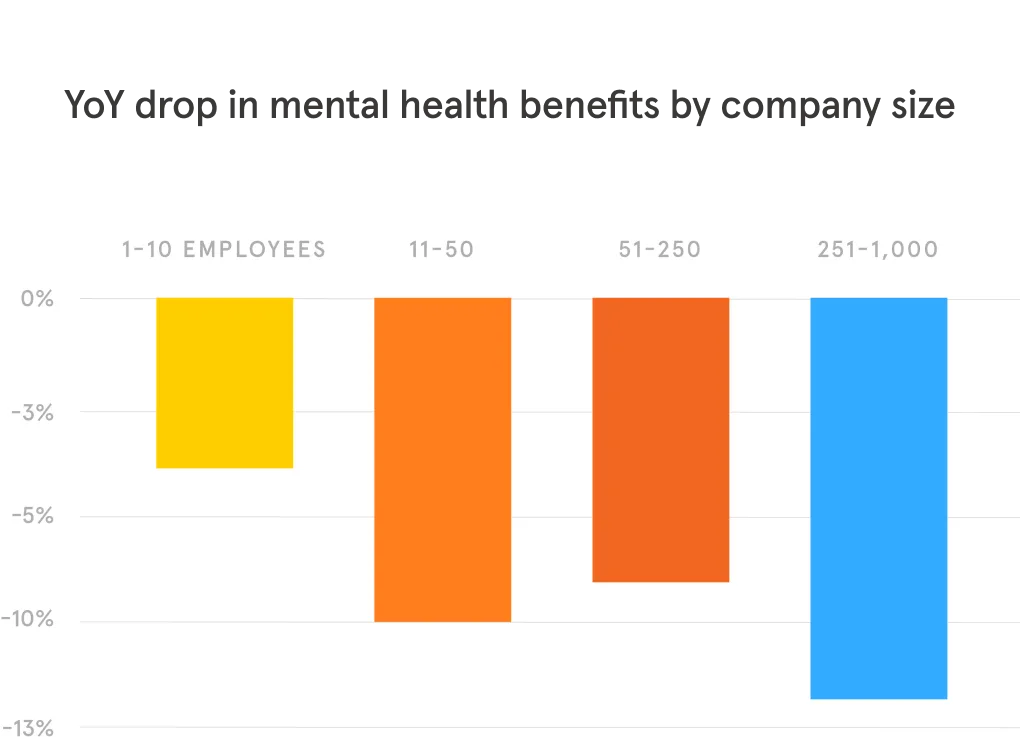
The decline also varies by market:
US employees rate mental health benefits and programs much higher than their global counterparts.
The UK saw a steeper reported decline in employer mental health benefits from 2020 to 2021 at a 7% decline compared with a 3% decline in the US.
In the US, 76% of employees rate them “excellent” or “very good,” about 17 percentage points higher than the next highest countries: UK and Australia.
Employees in France gave their benefits and programs the lowest marks, with just 51% rating them “excellent” or “very good.”
An increasing number of people are understanding the importance of looking after their mind.
Use of mental health benefits is on the rise
Almost two-thirds of employees are using mental health solutions offered by employers, up slightly from last year.
Mindfulness and meditation apps are among the most used proportionally (that is, the ratio between employers offering them and people using them). This indicates that an increasing number of people understand the importance of looking after their mind.
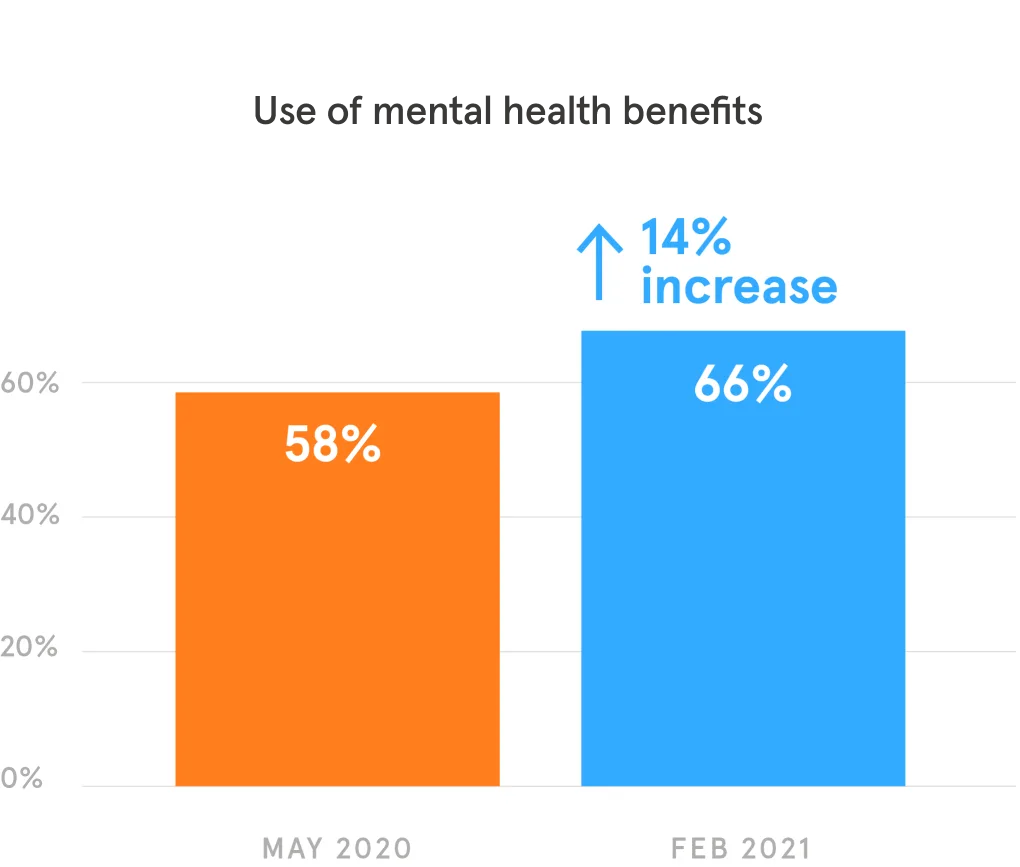
Other than on-site yoga (“most likely” at 65%), employees report turning to mindfulness or meditation solutions (53%) or an in-person mindfulness program (53%) among various mental health benefits offered by employers.
There are a few differences among gender, age groups, and functional roles within companies when it comes to use of employer-provided mental health solutions. Some deviations worth noting include:
Women accounted for the largest increase in reported use of these benefits — a 22% uptick in 2021, going from 46% of women saying they used them in 2020 to 56% in 2021.
While all age groups reported an increased use of these benefits and programs in 2021 compared with 2020, younger people aged 18-24 remained the most likely to seek support for mental health compared with other age groups (about 3 in 4 in this cohort said they've used an employer-based mental health solution).
Business owners and higher-level managers and directors were the most likely to use these benefits in 2021 compared with people in other company roles. Middle managers and above are 10% more likely to use a mindfulness or meditation app than non-managers.
Headspace for Work Expert Perspective
Now is not the time to scale back
Employers have the opportunity to treat 2020 as a wake-up call. With that in mind, they might consider continuing to prioritize mental health as a mission-critical area. The pandemic may have exacerbated mental health challenges, but it has also highlighted what has always existed. Employers are recognizing that their people need help with many issues, including mental health support, beyond those that are directly related to COVID-19.
While some business and benefits leaders are doing the right thing by bolstering employee benefits, mental health support is often lacking or does not address a person’s holistic needs to cope with stress and anxiety. Much of the data in 2020 and 2021 suggests not enough is being done to support employees coping with stress, especially during a time when people are increasingly exhausted by stress and anxieties at work and home. Headspace for Work recommends placing a strong emphasis on employee mental health and well-being with flexible, easily accessible, and comprehensive mental wellness programs.
Trend 2
Employees signal ongoing need for mental health programs

Headspace for Work began surveying employees about two months into the global pandemic, concerned over the support people were receiving from employers as stress was mounting from multiple crises. The goal was to find out how people were holding up amid one of the most stressful events of our lifetimes. Initially, we found that employers were stepping up by providing mental health programs, benefits, and solutions to support their people directly related to the impact of COVID-19. But according to our most recent survey, that support is on the decline.
Employees no longer rate employers high on COVID response
Fewer employees think their employers are doing an “excellent” or “very good” job of responding to COVID-19, with those top 2 responses dropping from 41% in 2020 to 28% in 2021.
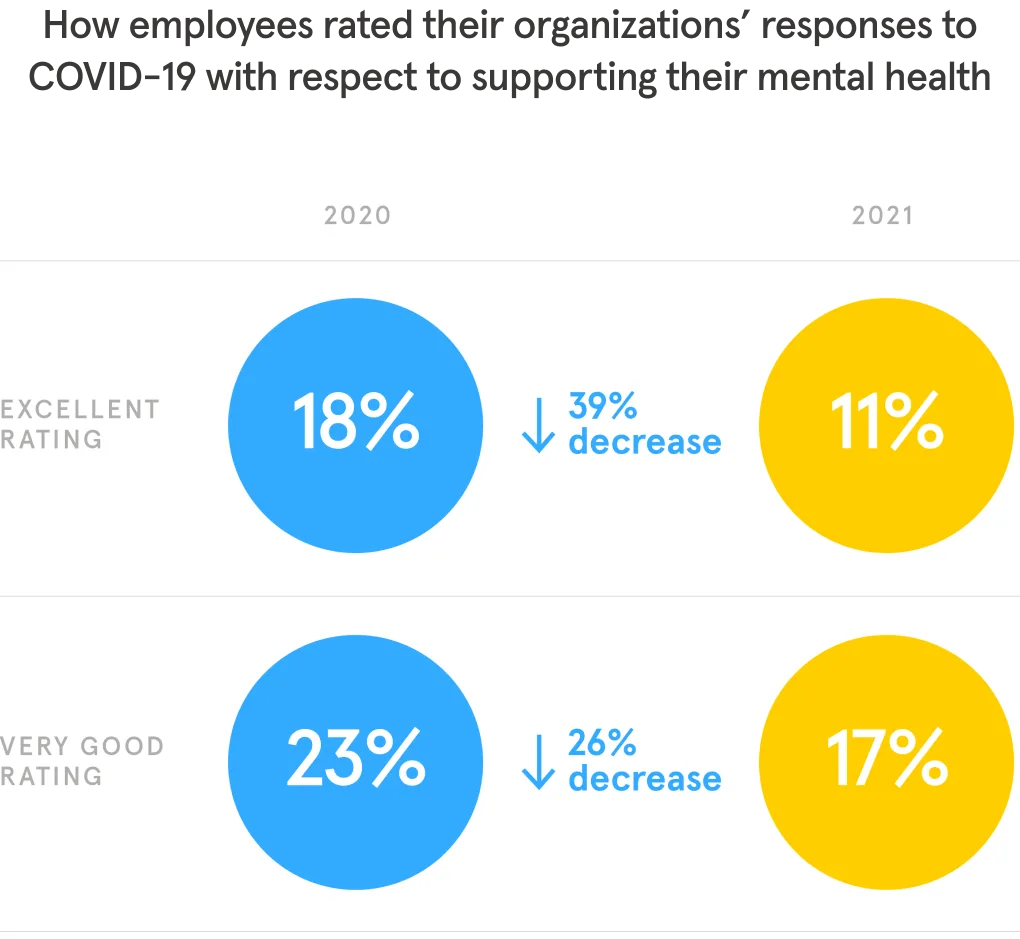
Fewer COVID-related mental health tools for employees
Support was stronger earlier in the pandemic for mental health, with nearly half of employers (48%) increasing access to mental health support and tools in response to COVID-19. This year, that dropped to 40% — a 17% decline. The reason for this may be collective optimism that an end to the pandemic is approaching with the rollout of vaccines. But that doesn’t mean people are doing fine without this type of support, as demand is still outpacing supply.
The expectation that employers will support mental health issues as “essential” fell slightly in 2021. Despite that trend, it’s worth emphasizing that demand remains high, with just over half of the workforce saying mental health benefits are essential (51%).

Employees in 2021 feel that mental health and well-being are a less of a priority in their organizations compared with 2020.
Do people think their employers don’t care?
Employees in 2021 feel that mental health and well-being are less of a priority in their organizations compared with 2020 — a drop from 56% percent who said it was a priority in 2020 to 51% in 2021. Business owners are seemingly overestimating the job they are doing in managing mental health to the satisfaction of employees — 60% of business owners say well-being is a priority in their organizations, yet only half of their employees agree.
Headspace for Work Expert Perspective
Employees still need support, beyond COVID-19
While the pandemic has helped normalize caring for our mental health, the conversation doesn’t need to stop when the crisis is over. If anything, the pandemic has served to shine a light on the stresses and pressures employees have to manage.
The virus has left stress, uncertainty, and anxiety in its wake, so it makes sense that support for your teams will need to be maintained, not stopped, in the aftermath of COVID-19 — not to mention, the constant stressors of everyday life.
Mindfulness and meditation programs like Headspace for Work are powerful ways to combat stress in the workplace, especially at a time when we’re primed to anticipate threats like COVID-19. “Our brains have developed to focus on threat,” says Dr. Megan Jones Bell, Chief Science Officer and Strategy at Headspace. “When we experience chronic stress, it can tax our immune system and cause more severe problems like anxiety, depression, and sleep disturbance.”
Instead of viewing meditation and mindfulness as an emergency measure to adopt in the grip of a crisis, perhaps one can view these tools as something to be used preventatively. If teams look after their minds as a matter of course, it means they are better equipped to manage pressures or crises as and when they arise, turning reactivity into skilled responsiveness.
Research shows that mindfulness meditation can reduce symptoms of stress,1 general anxiety, and depression, 2 and can have a significant impact on teams and organizations. “Meditation works by helping people regulate emotions, changing the brain to be more resilient to stress, and improving stress biomarkers,” Dr. Megan Jones Bell says.
It’s never been more crucial for employers to bump up mental health and wellness programs. Training employees and leaders to be mindful can not only help them cope with current stressors, but also to better prepare for challenges that may lie ahead.
Trend 3
Overall stress is letting up, but work-related stress is more prominent

Stress levels continue to vary by gender, age, and geography
Health concerns and political upheaval weighed heavy on the minds of many people in 2020. As anxiety over these issues lessens in 2021, people remain stressed over their finances and work-life balance struggles. Work stress has become one of the top 3 concerns in 2021 for all people.

Women remain more stressed than men by a 12 percentage point margin. This may be because of the strain of childcare issues or education for children caught between virtual and in-person environments (questions we did not ask in the survey). Regardless of the reasons, it is good for employers to know that women are carrying a disproportionate share of workforce stress.
Women and employees in the US are the most stressed
Overall, people are less stressed in 2021. In 2020, 61% of people reported being “stressed” or “extremely stressed,” and now that percentage has dropped to 54%. While it’s encouraging to see stress levels easing, there’s still work to be done — over half of all people still remain stressed.
Other variances that we detected in the data include:
US employees are the most stressed at 61%, compared with Germany at 55%, Australia at 53%, UK at 52%, and France at 50%.
58% of women reported being stressed or extremely stressed, compared with men at 46%.
Stress for non-binary people has increased dramatically in the past year from 41% being “extremely stressed” or “stressed” in 2020, to 62% in 2021 — more than a 50% increase.
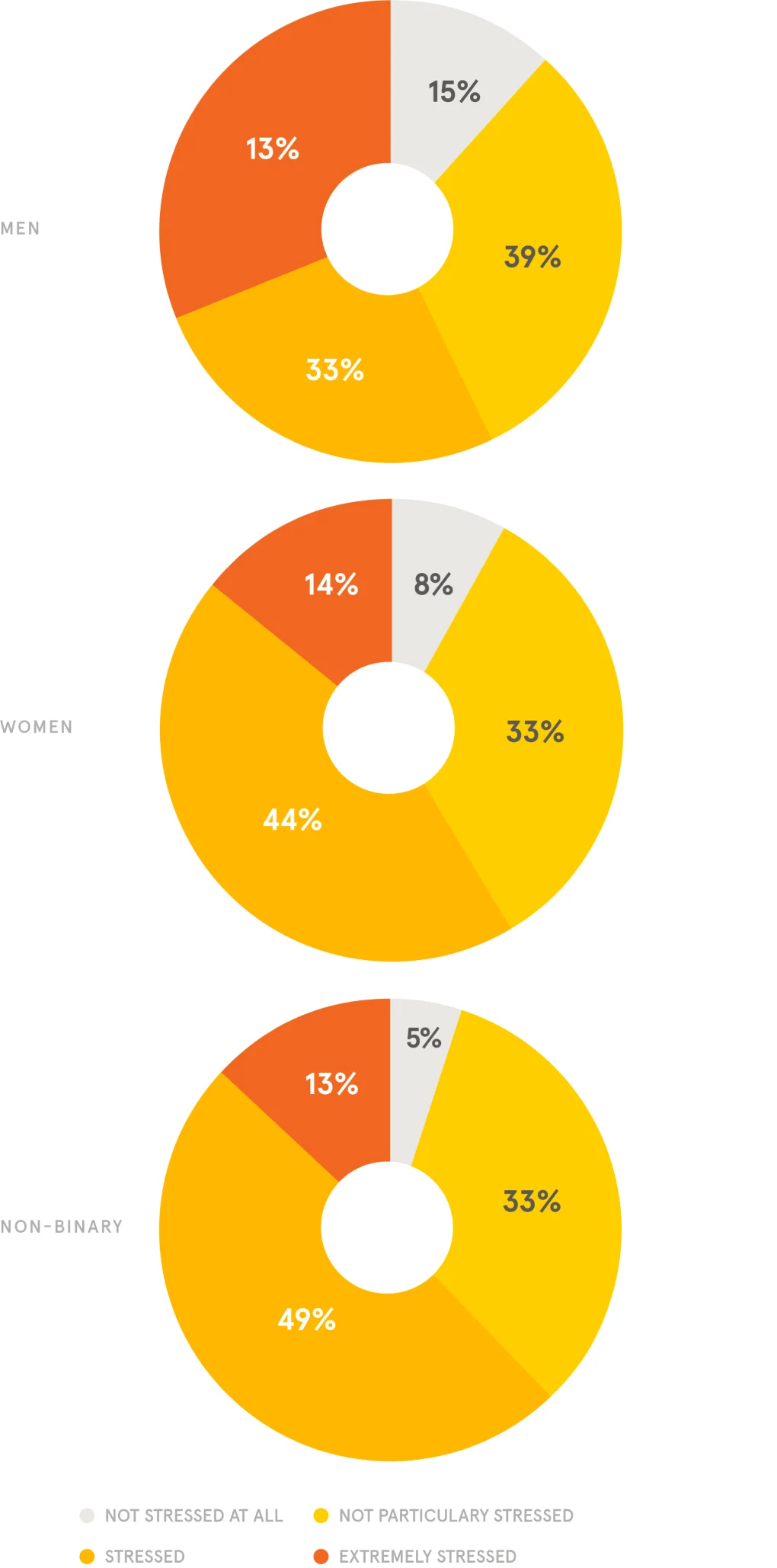
You have the opportunity to foster a culture that is more empathetic toward others.
Employees over the age of 44 are far less stressed
Given the fact that younger people were disproportionately affected by the economic downturn in 2020, it is not surprising that people over the age of 44 experienced less stress than their younger counterparts.

The rising threat of work stress
In 2021, work stress overtook one’s health as one of the top 3 sources of stress, with money and finances and work-life balance holding on to the top 2 spots. Work stress did dip slightly, but relative to other factors that fell sharply, work stress may be normalizing and regaining its place among the top 3 concerns. The Headspace for Work team will continue to monitor this over time to determine the baseline. It may be that work stress is consistent in our lives and requires constant attention. The good news is that, generally, we saw declines in all sources of stress.
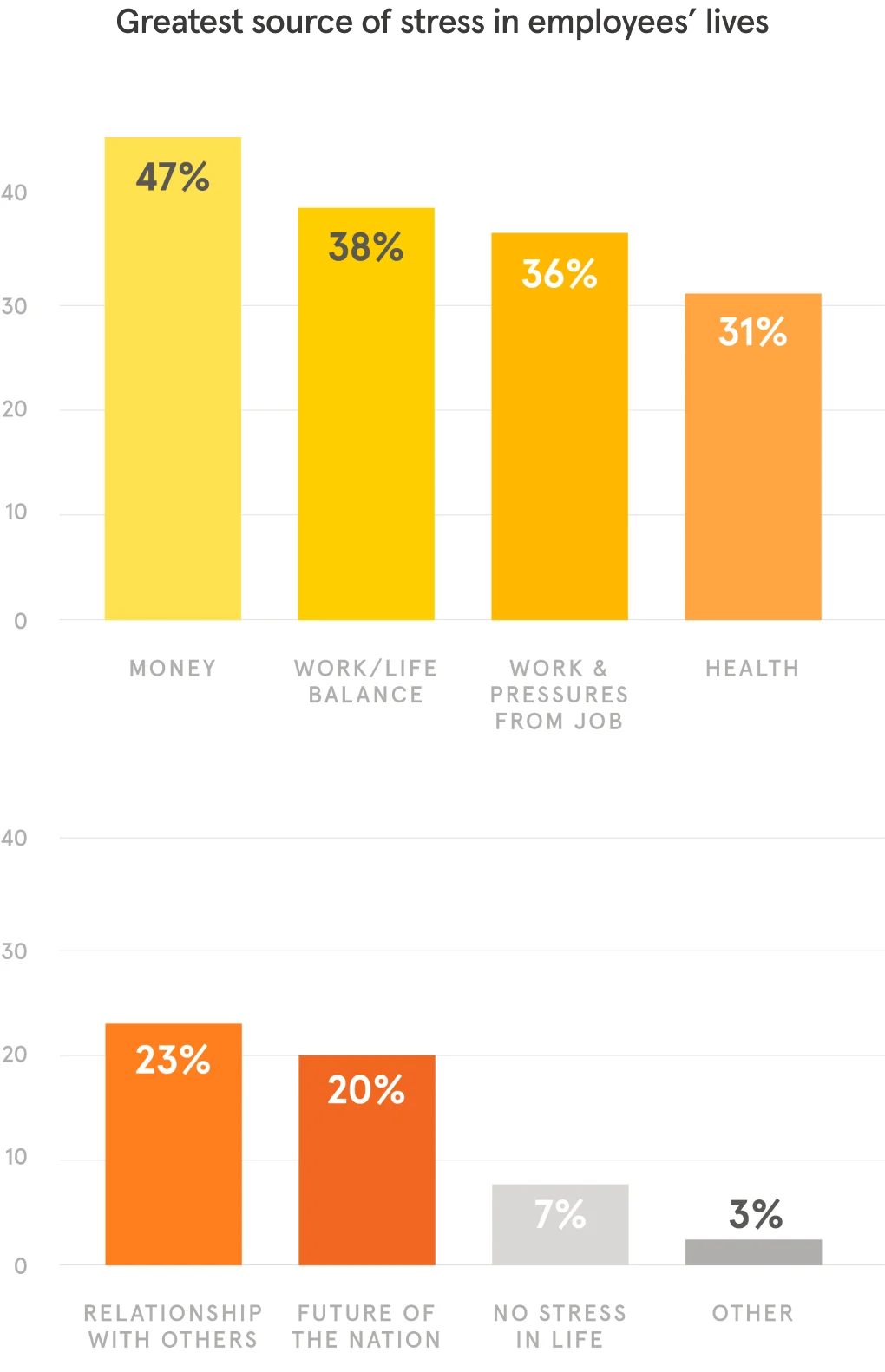
Headspace for Work Expert Perspective
Knowing your people and their unique needs
Implementing stress surveys can be a great way to measure and track stress levels across your organization. This will allow you to get a read on stress so you can adapt your workplace mental health programs accordingly, and target specific groups that are more affected than others with custom resources and tools.
Based on the results, you can recommend different ways to help employees reduce their stress levels, like meditations geared toward reducing stress or general anxiety, breathing exercises, or thought-leadership content on how to manage negative thoughts. In short, you have the opportunity to foster a culture that is more empathetic toward others.
Trend 4
Priorities shifted as the pandemic dragged on

One thing remains constant: people want mental health solutions backed by science. 3 in 4 employees want employers to provide mental health programs, benefits, and solutions built on evidence-based approaches. That sentiment remains unchanged from 2020.
But expectations of mental health solutions are evolving: people need help coping with shifting work-life balance, and they want increased flexibility. What’s interesting is that science encourages people to give meditation and mindfulness “a try”... but it’s the benefits experienced first hand that often result in a continued practice.
Traditional benefits are less valued amid disruption
Employees in 2021 valued benefits that helped them manage the disruptions in their lives more than traditional benefits like 401(k)/retirement or dental insurance.
Employees' top 5 priorities for benefits shifted, with "the option to work from home" and "paid parental leave" replacing "financial benefits" and "dental benefits." Flexibility rose from the number 5 spot to the benefit that employees find most valuable.

Employees found mental health first aid and crisis training more valuable than employer-provided mental health insurance in 2021. We also found that:
Mental health insurance/coverage remains the number 1 benefit that employees think would be most helpful, at 43%.
More employees ranked "mental health first aid/crisis training" as a more beneficial benefit in 2021, jumping from the number 4 spot at 30% to number 2 at 33%.
Employees want spouses and dependents covered, too
The expectation that spouses and dependents get the same mental health benefits as employees is gaining traction in the US, although it is an idea that declined globally by 14%.
The data shows that demand is outpacing availability:
Employees’ support for extending coverage to dependents is high: globally, 74% of employees support benefits for employees and dependents. In the US, it’s even higher at 84%.
Only 41% of employers provide mental health benefits to spouses and dependents in the UK, Germany, France, and Australia, yet 71% of employees want those benefits for themselves and dependents.

If you want a team to care about the company, then it’s valid for them to ask: “How much do you care about me?”
Mental health benefits are a higher priority for job candidates
Mental health benefits are more important to job candidates this year than they were in 2020. There is clearly a desire these days, if not an expectation, for employers to be invested in the welfare and well-being of employees. If you want a team to care about the company, then it’s valid for them to ask: “How much do you care about me?”
While “more flexible hours” and “work from home options” remain in the top 2 positions, job candidates (especially young applicants) care less about traditional benefits such as retirement benefits than getting support with their mental health. If candidates are valuing these benefits in their search for new job opportunities, it stands to reason that employees not seeking new opportunities may share similar expectations from their current employers.
When considering a new job, there is more demand for mental health benefits in 2021 than there was in 2020. Some of the finer points we saw in the data include:
In 2021, mental health benefits broke into the top 3 employer-provided benefits that job applicants would look for when considering a new position (swapped with retirement saving).
Respondents over the age of 55 ranked mental health benefits the lowest at 31%, compared with retirement benefits at 53%. Younger candidates were more likely to look for mental health benefits.
Leading the list in 2021 at number 1 and number 2 remain "more flexible hours" and "work from home options," same as 2020.
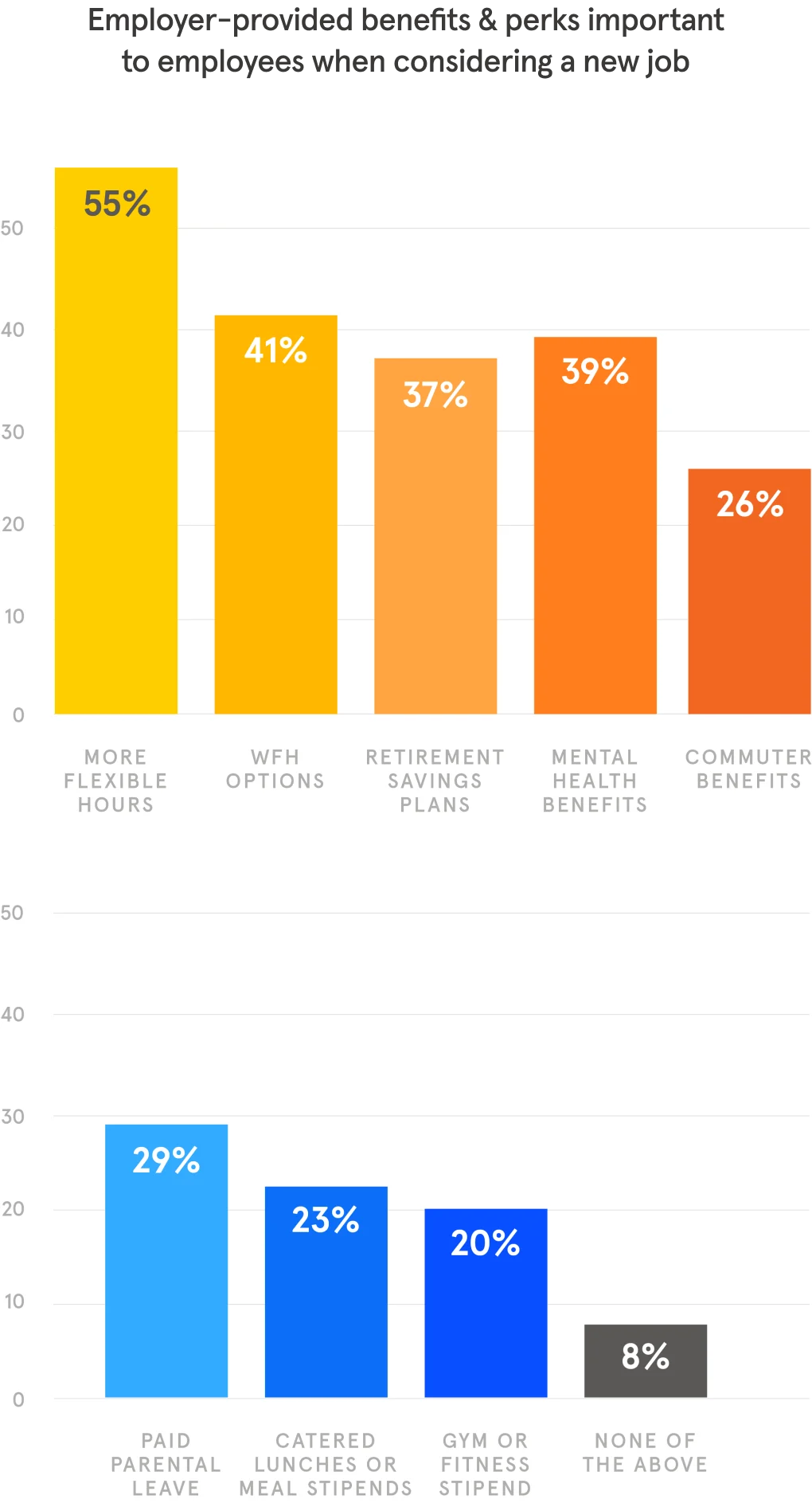
Headspace for Work Expert Perspective
Shifting employee needs require new solutions
As the way employees live and work continues to evolve, employers might well consider how they can support their people by meeting them where they are.
“Leaders have a unique opportunity to support employees’ mental health in a variety of ways,” says Dr. Clare Purvis, Headspace Senior Director of Behavioral Science. “It's important to offer multiple options for employees, from training to digital tools and beyond, to ensure unique needs and preferences can be met.”
Employers might want to keep in mind that it’s critical for managers and executives to feel supported as they are supporting others. One way to do this is to encourage mindful leadership training and programs. “Equally important is to have the commitment to mental health represented at every level of the organization, so support is modeled and felt by everyone,” Dr. Purvis says.
Trend 5
Mental health is a rising threat to retention, engagement, and productivity

Employers must address rising work stress and burnout
While stress overall has eased in the past year, work stress and burnout are on the rise. This should set off alarm bells for employers who want to retain top talent, and for leaders who care about the well-being of their people. What concerns Headspace for Work experts is that data in this year’s survey suggests that well-being is viewed as less of a priority to employers in 2021 than it was in 2020. Whether this is a matter of perception by employees or the reality, employers should plan to invest appropriately in the mental health of their people.
Work stress impacts personal lives and productivity
About half of all people say work stress bleeds over into their personal lives. Our team at Headspace for Work knows this can have a cascading effect on those closest to us, which means our spouses, children, roommates, and our closest coworkers are often affected by our stress. The mind we take to work is the mind we have at home, and vice versa.

Mental health days are on the rise in the US, but declining globally
Overall, fewer employees globally reported taking a day off due to stress, anxiety, or depression, with 38% saying that was the case in 2020 compared with 34% in 2021. But taking a day off for mental health was up 12% in the US in 2021, compared with the previous year.

Again, we see some differences in the way mental health is affecting people based on geography and gender:
Nearly half of all Americans took a day off in the past year due to stress, anxiety, or depression, up 12% from 2020 data. And US workers were the most likely to take time off compared with employees in the UK, France, Australia, and Germany.
The latest survey shows steep declines in time off for men (19% decline) and non-binary people (a 30% decline).
About 1 in 3 women took time off (the rate was unchanged from 2020).
About half of all people say work stress bleeds over into their personal lives ... the mind we take to work is the mind we have at home.
Engagement is down, and burnout is on the rise
Overall, people are likely exhausted. There’s only so much lingering stress we can handle, and the past year has left our capacity empty. Employees report being less engaged in 2021, and more people are reporting being “extremely burnt out” or “burnt out” at work.
While the downward trend for engagement and upward trend for workplace burnout were both in the single digits, they are still trends to note. Low engagement often leads to voluntary turnover, and burnout can hurt productivity, safety, and team dynamics.
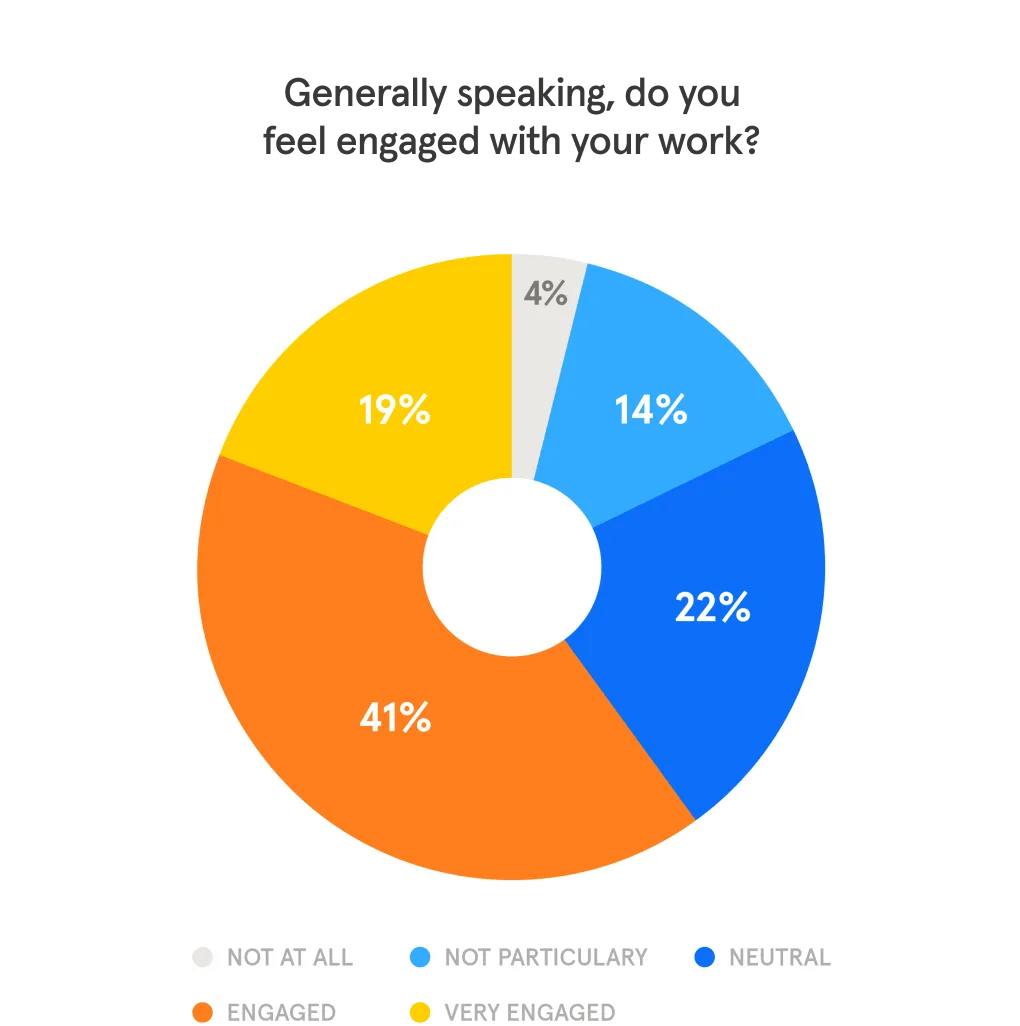
Work engagement dropped 7% in 2021 (for top 2 box responses of “very engaged” and “engaged”). Here are some of the differences in engagement based on gender and age:
Men and non-binary people reported the biggest declines in engagement in 2021 — men saw a 13% drop and non-binary people saw a 26% drop.
Young people 18-24 years old were the age group with the biggest decline in work engagement in 2021, falling 18% from 2020.
Headspace for Work Expert Perspective
Mental health concerns are here to stay
The mental health concerns that have risen to the surface in the past year are the norm, not the exception. As is now clear, work stress, burnout, and falling engagement are warning signs to note, with respect to an individual’s well-being and the company’s bottom line.
Now that these issues are out in the open, our collective awareness cannot be put back in a box. So this time presents an opportunity for employers to pivot, by heeding the call to improve retention, decreasing mental health sick days, and maintaining productivity within a culture that is alive to the welfare of everyone, from top to bottom.
“It is well documented that mental health problems are on the rise globally,” Dr. Megan Jones Bell says. “Even prior to COVID-19, 1 in 4 to 5 people experienced a mental health disorder at some point in their life, so these are not new problems. But the crisis is undoubtedly surfacing a number of stressors and mental health issues for many people.”
Aside from spotlighting existing issues, the pandemic has also created new ones: working from home, for example, is a new normal for many. Within the blurred lines between work and home life, direct access to mental health content is becoming increasingly important.
The silver lining? Many more people are open to exploring mindfulness tools not just as a reactionary tool, but as a preventative tool, so that when things get difficult in the future, they have the skills they need to cope. By making resources like Headspace for Work readily available, employers are helping employees maintain their mental well-being on a daily basis — not just when a crisis hits.
Conclusion
When we step back and observe both the findings of the survey and life itself over the past year, it’s clear that looking after their mind is an increasing priority for people in the workplace. It’s seen in the data. It’s seen in the feedback members share with Headspace.
If anything, 2021 — the spillover from the previous year and the continued lockdowns — has highlighted a light not only the ongoing need for employee support, but also on the importance of acting preventatively, not reactively, with people’s mental health in mind.
Headspace for Work is on hand to offer our expertise in helping people look after their mind. We are here to help with an enterprise-ready mindfulness and meditation solution that creates happier, healthier employees who trust their company makes mental health a priority.
Our research demonstrates the benefits — mindfulness decreases stress, increases focus, improves productivity, and builds a resilient workforce, better equipped to take on new challenges. Everyone’s awareness around mental health has no doubt broadened since March 2020, and now we can build on that awareness and understanding. When weighing the benefits of proactive mental health programs, it becomes clear that it’s a win-win for employer and employee. Because resilient minds build resilient people, who build resilient companies.
Methodology
Headspace for Work conducted the same 25-question survey that it launched in May 2020 to gauge the degree of mental health issues that employees are facing, the availability and accessibility of mental health solutions provided by employers, and what issues are causing stress in people’s lives. This year’s survey ran from February 23, 2021 to February 26, 2021, and yielded more responses from women (56%), compared with last year’s survey (48%) and slightly more non-binary people (up to 3.3% in 2021 from 2% in 2020).
This year, Headspace for Work added Australia, France, and Germany to the survey (the 2020 survey targeted the US and the UK). Most of the comparisons using geography in this report will highlight shifts in the US and UK, but will also highlight where there are differences among the countries.

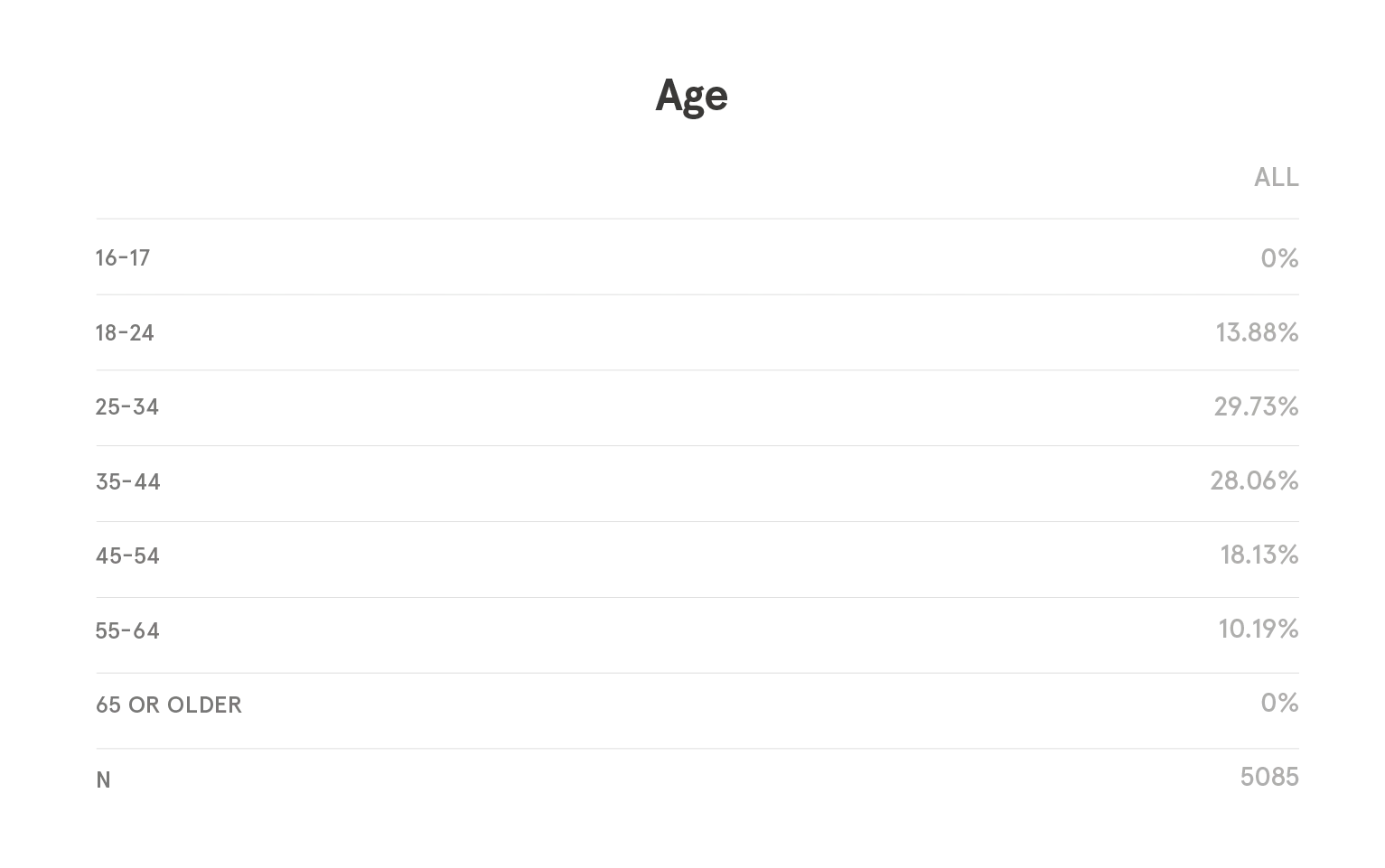



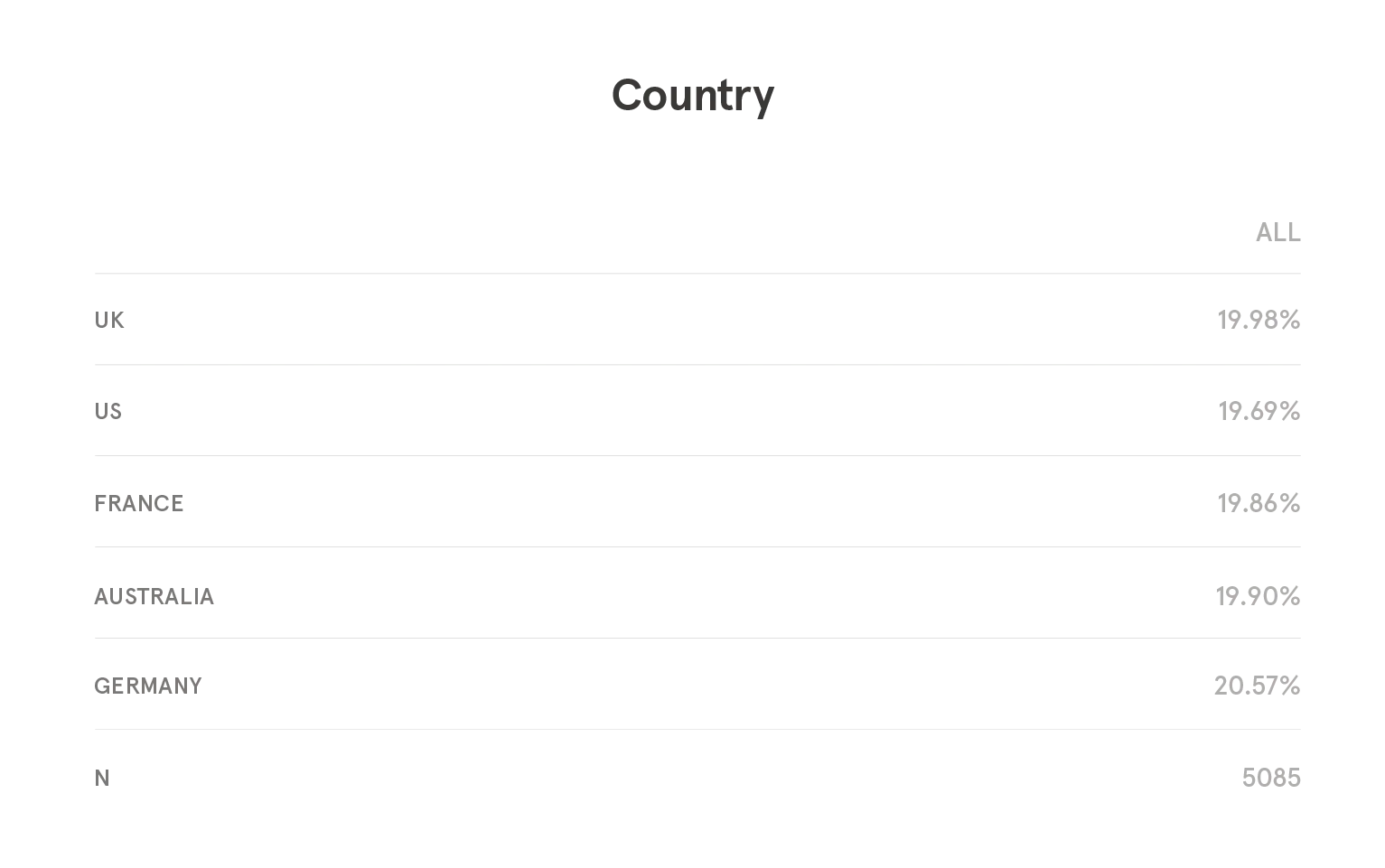
1. PLoS ONE. (2018, Dec 31) "The efficacy of a brief app-based mindfulness intervention on psychosocial outcomes in healthy adults: A pilot randomised controlled trial" https://doi.org/10.1371/journal.pone.0209482
2. National Library of Medicine. (2019, Feb 24) "Mindfulness on-the-go: Effects of a mindfulness meditation app on work stress and well-being" https://www.ncbi.nlm.nih.gov/pubmed/29723001
Resources
We’re serious about research and results. Dive in to the resources below to learn how mindfulness training can benefit your team and your business goals.

Why mindful cultures shouldn't end at 5:30pm

How mindfulness can play a key part in an inclusive diversity strategy

How to navigate and motivate change
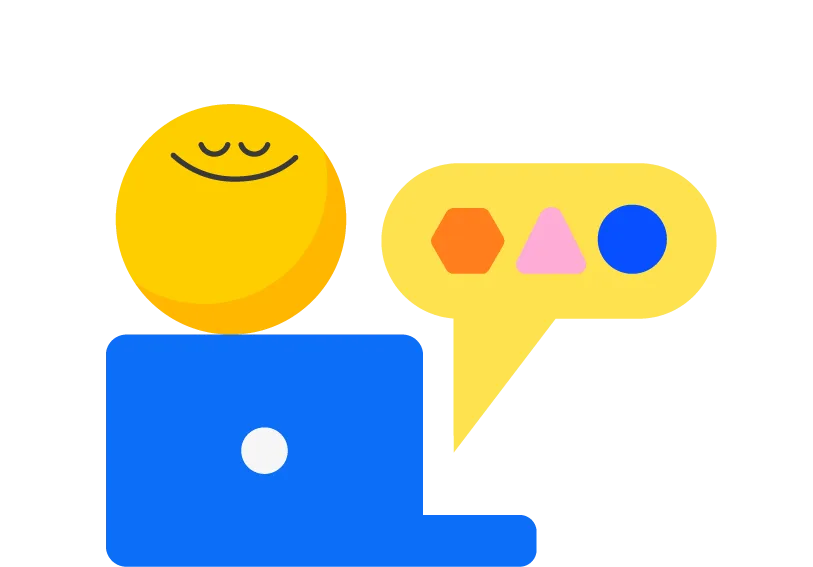
Implementing a mindful culture: how to get company buy-in

Why you should check in on that colleague today

Why your top talent is leaving (and what to do about it)

Headspace Article: What's missing with work well-being?

Headspace Article: Insights from our first podcast

Headspace Article: Well-being in the world of work

Headspace Article: Creating a caring workplace

Headspace Article: How a mindful brand can attract happier, healthier talent

Headspace Article: 5 traits of high-performance work culture
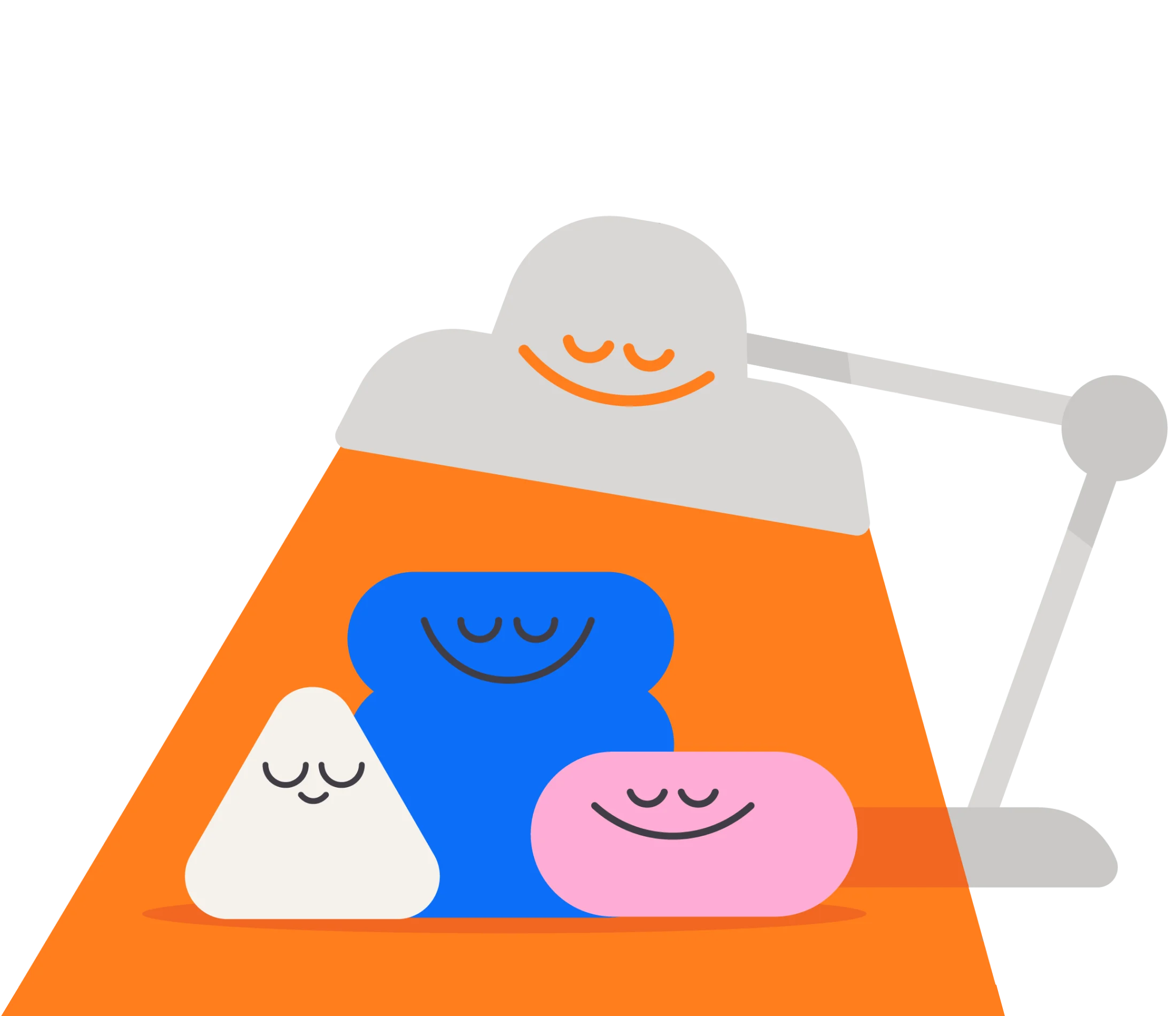
Headspace Article: Announcing the 2022 Mindful Workplace Award Winners

Headspace e-Book: Turning negative stress into positive change

Headspace e-Book: How to strengthen teams by reducing group stress

Headspace x Forrester report: Mindfulness and The Leader of The future

Headspace x AMN Healthcare e-Book: The mental health impacts of healthcare burnout

Headspace Webinar: Compassionate cultures for working parents

Headspace Article: How mindfulness can help teams prevent burnout

Headspace Case Study: Hootsuite x Headspace
- © 2024 Headspace Inc.
- Terms & conditions
- Privacy policy
- Consumer Health Data
- Your privacy choices
- CA Privacy Notice
